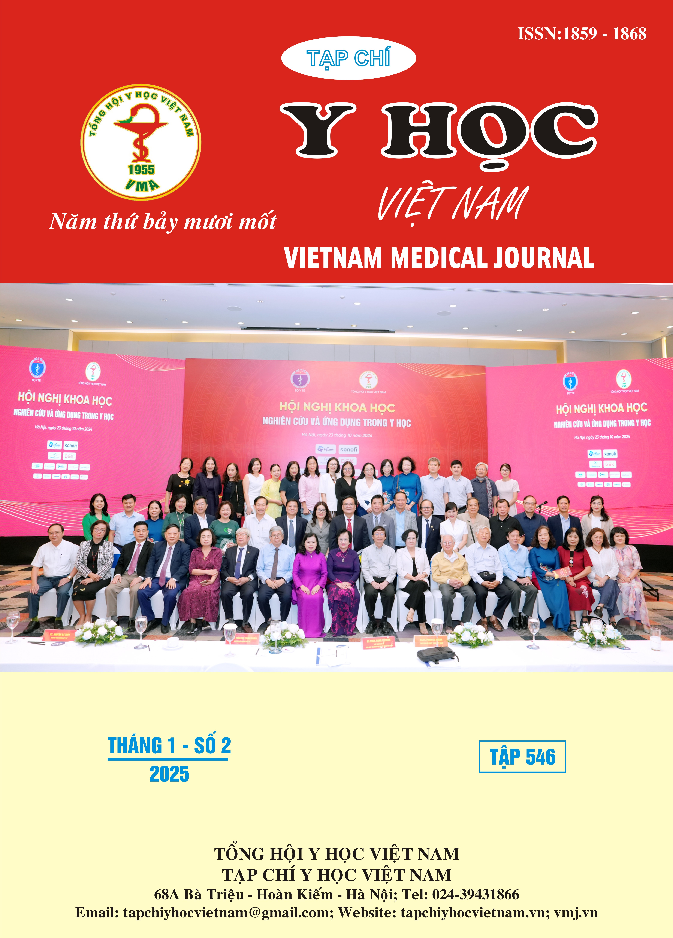APPLICATION OF DUAL-ENERGY COMPUTED TOMOGRAPY IN DIAGNOSING GOUT AT BACH MAI HOSPHITAL
Main Article Content
Abstract
Object: To describe the clinical characteristics, tests, dual energy computed tomography (DECT) imaging of gout patients at Bach Mai hospital and to present types of urate crystal deposition artifacts and their management. Subjects and Methods: A total of 36 patients underwent DECT imaging for the diagnosis and differential diagnosis of gout at Bach Mai Hospital from January 2020 to August 2024. Research design: Cross- sectional description. Results: Study on 36 patients (31 male and 5 female), with an average age of 52 (range 18-82). Patients had diverse clinical symptoms. Using ACR scoring combined with clinical and blood uric acid: 28 cases were in group 2, with the diagnosis dependent on DECT results (77.8 of cases). Using ACR scoring with clinical, blood uric acid, and DECT: 16 diseases were diagnosed as gout making DECT useful for diagnosing gout in 11/16 (~69% of gout patients) and ~39.3% among 28 suspected patients. Urate/gout crystal ratio: 15/16 patients. Average urate volume/gout: 3.91ml. Urate crystal deposition sites: 60% at the metatarsophalangeal joint. Artifact rate: 27,8%. Common artifacts include: thick skin, nail bed, motion, point, and beam -hardening artifacts. Underfined artifacts are rare and require coordination with other criteria. Conclusion: DECT plays an important role in the definitive diagnosis and differentiation of gout, especially in cases where clinical criteria and serum uric acid testing are not sufficient to confirm or rule out the disease. Urate crystal deposition artifacts are common, but can be recognized and corrected to avoid false positives, increasing the accuracy of diagnosis and treatment.
Article Details
Keywords
Gout, dual-energy computed tomography, imaging artifacts, ACR/EULAR 2015 criteria.
References
2. Neogi, T., et al., 2015 Gout Classification Criteria: an American College of Rheumatology/ European League Against Rheumatism collaborative initiative. Arthritis Rheumatol, 2015. 67(10): p. 2557-68.
3. MacFarlane, L.A. and S.C. Kim, Gout: a review of nonmodifiable and modifiable risk factors. Rheum Dis Clin North Am, 2014. 40(4): p. 581-604.
4. Barbieri, L., et al., Impact of sex on uric acid levels and its relationship with the extent of coronary artery disease: A single-centre study. Atherosclerosis, 2015. 241(1): p. 241-8.
5. Nicholls, A., M.L. Snaith, and J.T. Scott, Effect of oestrogen therapy on plasma and urinary levels of uric acid. Br Med J, 1973. 1(5851): p. 449-51.
6. Latourte, A., T. Bardin, and P. Richette, Prophylaxis for acute gout flares after initiation of urate-lowering therapy. Rheumatology (Oxford), 2014. 53(11): p. 1920-6.
7. Ogdie, A., et al., Imaging modalities for the classification of gout: systematic literature review and meta-analysis. Ann Rheum Dis, 2015. 74(10): p. 1868-74.
8. Mallinson, P.I., et al., Artifacts in Dual-Energy CT Gout Protocol: A Review of 50 Suspected Cases With an Artifact Identification Guide. American Journal of Roentgenology, 2014. 203(1): p. W103-W109.


